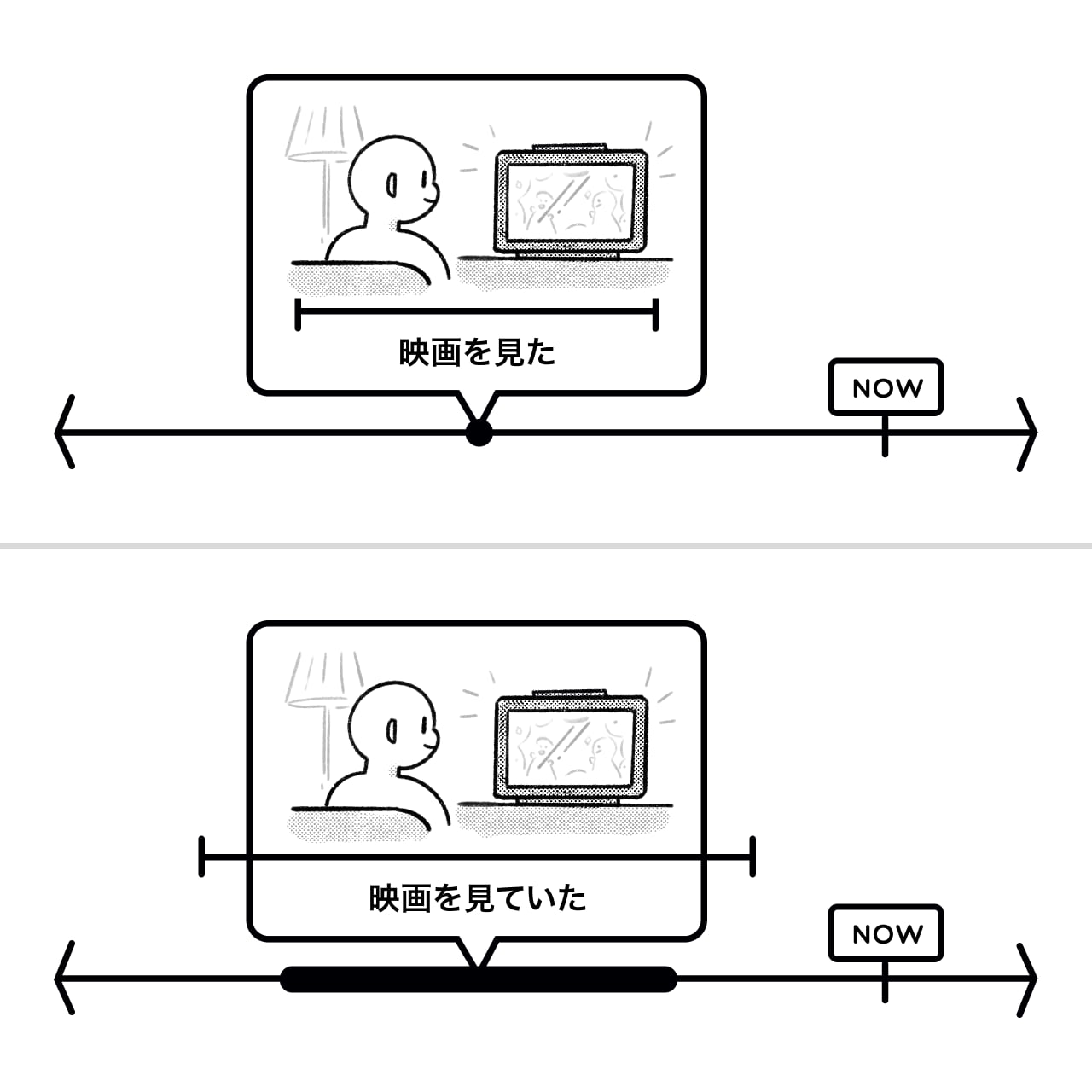Table of Contents
- What Is ていた?
- ていた to Emphasize the Duration of an Action
- ていた for the Results of Actions
- Other Forms of ていた
What Is ていた?
The ていた ending on verbs puts them into the past continuous form, which places focus on the duration of a past action. The form can take the shape of 〜ていた or 〜でいた, as in 食べていた (was eating), 飲んでいた (was drinking), and 来ていた (was coming). It's very close to the past continuous in English and can very often be translated as such, though there are some exceptions that we'll look at in a moment.
You've probably already come across the verb form ending 〜ている, which can be used to describe something that is happening now. So 食べている means "is eating," and 話している means "is talking." This isn't the only use of 〜ている, but it is the one that is the most similar to English. The ていた form can have this same idea of an action being in progress, except that in this case the action is in the past. So 食べている becomes 食べていた and means "was eating."
ていた to Emphasize the Duration of an Action

Just like in English, one use of this form is to put the emphasis on the duration of the action:
- 映画を見た。
- I watched a movie.
- 映画を見ていた。
- I was watching a movie.
In the top image, the action of watching a movie is contained within a certain timeframe and viewed as one unit. The duration of the action is not important. Rather, using the た ending emphasizes the fact that the action happened and is now complete.
In the bottom image, the use of 〜ていた makes it so that we don't know if the person finished watching the film or not. What is important is the duration of the action, rather than the result.
ていた for the Results of Actions
When we are talking about an action that was completed in the past but continues to be relevant afterward, we use forms like "had done" in English, as in "I had finished the essay before I realized it was on the wrong topic." Japanese doesn't have a structure like this, and instead 〜ていた can be used to express a similar meaning. Let's look at an example to get a better idea of what we mean here:
- 朝起きたら、お母さんがもう出ていた。
- When I woke up in the morning, my mom had left already.
If we translate "had left" into Japanese, we might be tempted to say 出た here, since 出ていた might seem like it means "was leaving." However, 出た would indicate that my mom left at the specific moment that I woke up. Instead, Japanese uses the continuous form to show that something has happened, and the result remains relevant. So when we would use "had left" in English, we can use 出ていた in Japanese.
Other Forms of ていた
Like the た form, this is the plain form of the verb, and it therefore does not show politeness. So when it is used at the end of the sentence, that sentence is casual rather than polite. You'll probably use it with friends and close acquaintances, and towards people who are younger than you or considered further down the social hierarchy for some other reason.
To make the verb polite, we can simply change the た ending into the ました ending.
On the other end of the spectrum, when we are speaking casually we very often contract the ていた form. In this case we don't say the い, and the ending becomes 〜てた. This is very natural in casual conversation, and you're likely to come across it a lot if you tend to speak Japanese with friends, or if you watch anime or read manga.
〜ていた can be used in the middle of sentences too. In this case, it doesn't show the level of politeness of the sentence. Instead, it gives information about the word or phrase that comes next.
When 〜ていた is used in the middle of a sentence, it is sometimes interchangeable with the present ている form, as in this example:
- 日本に住んでいる時に、日本語を習った。
日本に住んでいた時に、日本語を習った。 - While I was living in Japan, I learned Japanese.
Both 住んでいる and 住んでいた can go before 時, without changing the meaning of the sentence.